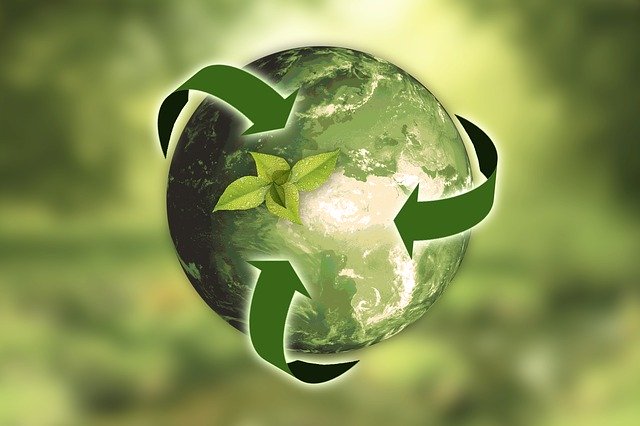These 8 New Sustainability Trends Are Making Waves in the Food and Beverage Industry in 2024
 The rise of eco-conscious lifestyle choices affects every industry, including food and beverage brands. Companies must meet consumer demands and stay ahead with innovative ideas to succeed. Read these sustainable food trends to learn what’s ahead for each industry.
The rise of eco-conscious lifestyle choices affects every industry, including food and beverage brands. Companies must meet consumer demands and stay ahead with innovative ideas to succeed. Read these sustainable food trends to learn what’s ahead for each industry.
1. Locally Sourced Ingredients
The International Data Corporation found 29.9% of consumers want more eco-friendly products and offers within industry marketplaces. People in the food and beverage industry must meet that demand to maintain nearly a third of their consumer base. Locally sourced ingredients are an easy way to transition into a more eco-friendly business model without a complete structural overhaul. Business owners can meet with local farmers to discuss procurement arrangements.
Getting fresh food from nearby farms requires less fuel. It may only take a gallon or two to deliver things locally, compared to hundreds or thousands of gallons for national or international deliveries. The reduced shipping distance even makes delivery fees less costly. It’s an easy solution for anyone looking to go green because it only takes a few phone calls to set up new ongoing deliveries.
2. Low-Flow Water Systems
Food-focused shops and restaurants need more water than other businesses like retail stores. They have to wash food, prep water-based recipes, keep the kitchen clean and ensure guests have constant access to restrooms. It’s impossible to do business without the limited natural resource, but low-flow water systems are a big part of sustainable beverage trends.
Low-flow plumbing reduces a facility’s overall water pressure, conserving it during daily use. As consumers order things that require water — like sodas or smoothies — nearby signage can inform them how the restaurant uses less water than competitors. Interested business owners can look into these options with low-flow nozzles or more extensive plumbing upgrades.
3. Chemical-Free Agriculture
Food sustainability includes eco-friendly policies stretching back to the farms supplying ingredients to the food and beverage industry. Restaurant owners interested in going green can request more information from their agricultural suppliers to learn how they raise their crops.
Chemical-based pesticides and fertilizers may produce reliable, high-quality food but aren’t good for the environment. The non-biodegradable chemicals affect nearby plants and animals by leaking into biomes as water washes them off farm property.
This is one of the more prominent sustainable food trends industry leaders can follow. Being able to advertise chemical-free products from eco-friendly farms demonstrates a more profound commitment to the planet’s health. Consumers know their values match that company’s more than others with surface-level green efforts like replacing styrofoam cups with plastic alternatives.
4. Compostable Takeout Boxes
Single-use products end up in landfills and often don’t decompose due to their materials. Consumers who care about the planet want to avoid those types of food packaging options. Their interest fuels a drive for compostable packaging, which should be a $121.38 billion industry by 2025 due to high demand.
Biodegradable and compostable takeout containers appeal to eco-friendly consumers. They know their food quality is safe within the packaging and the boxes won’t add to landfill pollution after they arrive home.
Options like these can encourage family members or friends to purchase gift cards from the establishment as presents for people living sustainably. Given that only 24% of people spend less than $250 on gifts for Christmas, this sustainable present idea saves money when it matters most without compromising eco-friendly values or meal preferences.
5. Photovoltaic Restaurant Panels
Electricity plants release four types of emissions into the atmosphere, intensifying global warming with excess pollution. Enterprises in the food and beverage industry can invest in photovoltaic panels to reduce their carbon footprint in more ways than one.
People rely on solar panels to power their homes with portable or permanent panel arrangements from private solar companies. Photovoltaic panels might be better for businesses — they create electricity and heat from thermal energy sources, so water heaters and electric lights can operate from the same power source. Solar panels only convert solar radiation into electricity.
The panels will operate more often using thermal heat instead of just solar radiation. It’s one of the sustainable food trends prioritizing daily operations beyond the product consumers get to enjoy after placing an order.
6. Unused Food Donations
Restaurants in the U.S. waste 7.6 billion pounds of food each year by overlooking ingredients in fridges and scraping mistaken orders into trash cans. The items used to produce and ship those ingredients go to waste, drawing from the planet’s resources for no purpose.
Untouched, edible food can support those in need instead. Food and beverage businesses are donating what remains after each business day to local food banks. The effort impresses consumers aware of food waste and those who care about helping their communities.
7. Plant-Based Ingredient Options
People know how their dietary choices affect the planet. They’re aware their meat and milk preferences can harm the planet through livestock and agricultural business practices that produce excessive amounts of pollution, so plant-based foods are popular alternatives. Consumers can enjoy sustainably sourced meals without worrying about their environmental impact.
Plant-based food sales are up 7% from 2021 because demand keeps rising. This incorporates both sustainable beverage trends and consumer food preferences. Businesses serving smoothies with plant-based milk or meats made with plants can become part of this trend as it grows more popular each year.
8. Transparent ESG Values
Environmental, social and corporate governance (ESG) values form the core of green enterprises. Traditional food and beverage brands might list their core values with sensible factors like high-quality customer care and fast service. Those also prioritizing sustainability can include ESG values so consumers know they care deeply for the environment alongside traditional business practices.
Transparency looks different for every company. It could be a restaurant outlining and explaining its ESG beliefs on its website, or signage in a smoothie bar so customers can read the ESG values while sipping their favorite beverages. Each industry leader must decide how to be more transparent about their planet-focused values according to their business model and personal preferences.
Join These Notable Sustainable Food and Beverage Trends
Anyone can learn more about sustainable food trends and use them to benefit their businesses. Meeting consumer demands by avoiding chemical-based ingredients, offering compostable packaging and powering each storefront with eco-friendly electricity are just a few ways to get started


